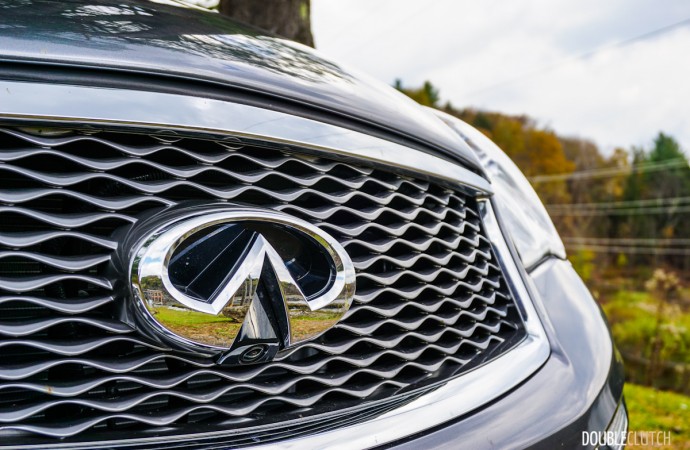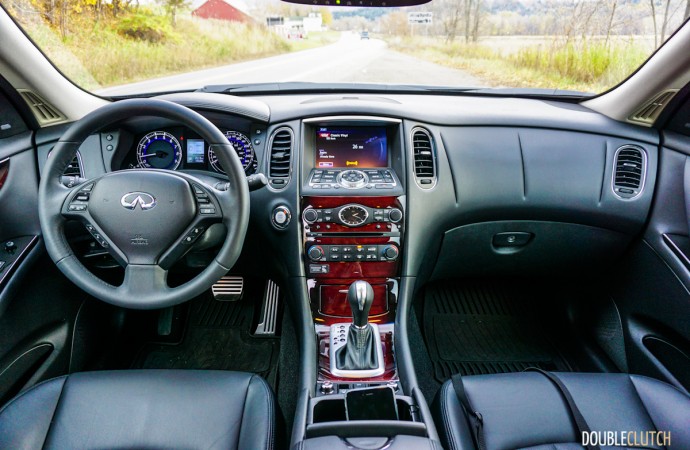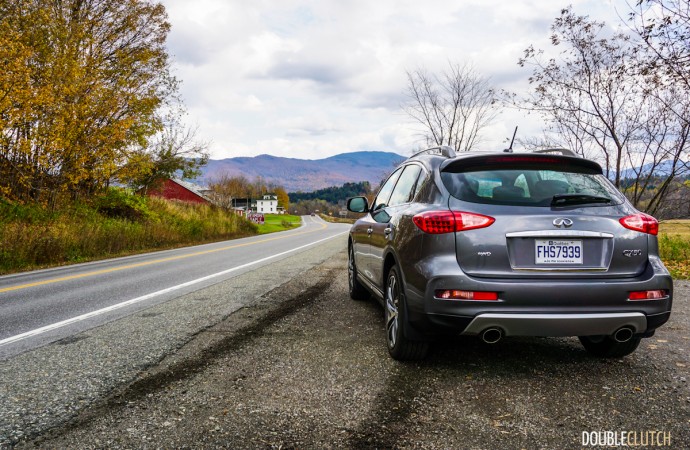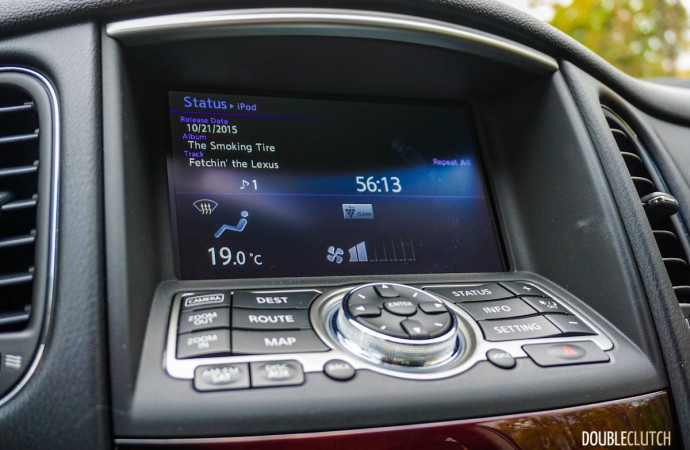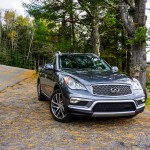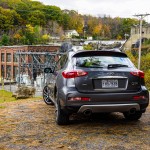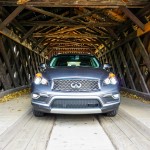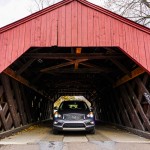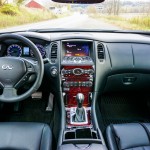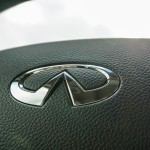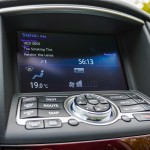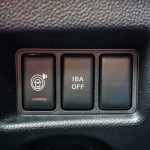Stowe, Vermont – The newest crossover from Infiniti is particularly special to me for a few reasons. I discussed most of them in my recent first drive in San Diego, but this was a car I wanted to spend some more time with to understand its personality and unique character. When I had to take a road trip from Montreal to the stunning mountainsides of Vermont, I couldn’t pass up the chance to drive the 2016 Infiniti QX50 on this unique road trip. The uniqueness of this trip comes into play as these roads were completely unfamiliar to me, and the route would give me the perfect chance to explore the on-board safety technology the QX50 boasts, as well as determine just how efficient it can be at highway speeds.
The QX50 is a heavily refreshed successor to the EX37, which itself was originally based on the G37 sedan. This is particularly important because the G37 was one of my favourite cars of the past decade, and is one I still hold dear to my heart. This car was special thanks to its torquey, throaty VQ-series V6 motor, its hefty steering with ample natural feedback, and its elegant styling. The QX50 is basically a slightly higher-riding G37 station wagon – to call it a normal crossover would be blasphemous to its character.
The numbers are quite simple – under the hood of the 2016 QX50 is the Infiniti corporate 3.7L VQ-series motor, slightly massaged for this application. The 3.7L pushes 325 horsepower (at 7,000rpm) and 267 lb-ft of torque, peaking at 5200rpm. There’s no CVT here, with the sole transmission choice being an excellent seven-speed automatic. It packs rev matching for downshifts and slick transmission mapping with strategic shifts at predictable times. No paddle shifters are available, but when navigating through narrow mountain roads in Vermont, I made decent use of the manual shift mode, which gave me control over the transmission.
Going uphill through the curves was particularly satisfying, with a throaty roar through the QX50’s dual exhaust, reminding me of the G37 Coupé’s iconic noise. The proper hydraulic steering is outdated when you consider Infiniti’s steer-by-wire application in the current Q50, but for purists, the old setup is simply marvelous. There’s nothing delicate about this system, and the excellent amount of feedback and weight to the wheel makes it a joy to navigate through the twists while enjoying the gorgeous foliage this season has to offer. The QX50 comes alive here, and it never reminds you of the fact that it’s a crossover.
I spent a good chunk of my time with the QX50 on the highway, cruising at a steady pace right at the posted speed limit. The cruise control is adaptive and radar-guided, so the car was able to fend for itself with regards to slower-moving traffic, while maintaining maximum efficiency. Unlike the larger QX60, there is no “Eco” mode on this crossover, but I’m perfectly fine with that as the sporty personality of the QX50 doesn’t exactly coincide with that of greener vehicles. Solely on the highway, I was able to keep my economy in the range of 9.9L/100km on premium fuel. After factoring in a bunch of mountain driving with steep ascents and generous use of the throttle, the overall average for my trip was 11.1L/100km.
The overall infotainment setup in this Infiniti is a bit old, but is relatively simple to use. Media and navigation inputs can be done via the touchscreen, but there is a nice rotary dial with actual usable buttons. My challenge here was that the controller is located directly beneath the screen, so there’s no real location advantage to it. If it were a bit closer within arm’s reach, I could see more reason to use it and keep fingerprints off the screen itself. Infiniti has implemented some interesting new technology on board for 2016 though, and this includes an industry-first Distance Control Assist. This feature is neat, as it coaxes the driver to release the throttle and automatically applies the brakes as traffic slows down.
Adding to the technology suite in the QX50 is the Infiniti navigation system with Birdview perspective control, 3D graphics and a hard drive that internally stores all map data. The advantage to this system over other satellite-based units is that its response time is exceptional, and inputs are easy and fast. The graphics look a bit dated, but I expect this to be changed across the Infiniti lineup in the near future. There’s also Keep Assist which holds the crossover within the lines when driver error causes it to drift off-track. The reality is, Infiniti has packed a huge amount of new tech into this refreshed model, and at a fully-loaded price of just under $50,000, it presents excellent value.
The 2016 Infiniti QX50 has placed itself in an interesting spot within its segment. Whereas most competitors (namely the BMW X3, Volvo XC60 and Acura RDX) have gone towards improving the smoothness, efficiency, and technology on board, the QX50 is soldiering on with an older powertrain that still delivers what Infiniti believes is important – excellent performance and a rewarding drive. The outgoing 2015 BMW X1 is the only other vehicle in the small luxury crossover segment that’s remotely spirited to drive, and its softer, more comfort-oriented successor has already arrived. If I were shopping and a sedan just won’t do, without needing to go up to a larger SUV, the QX50 would be where my money goes.

